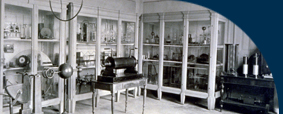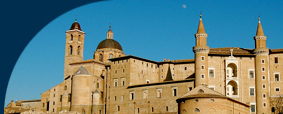This was a huge architectural structure including a convent with three cloisters, to which the Church was soon added. It was built between the 13th and the 14th century, occupying a very large surface of the town area. The re-buildings of the 18th and 19th centuries radically modified this structure, leading to the substantial disappearance of the cloisters, to a widening of the Church and to a modification of the convent; later interventions of town planning towards the end of the 18th century further limited the area occupied by the Convent. The cultural tradition of the Franciscans in Urbino was deeply rooted, as there probably were "school" activities already in the late Middle Ages, whereas during the Renaissance a "Gymnasium Publicum" was active in the Convent, which had received the permission to give out degrees in Theology and Philosophy. Moreover, the Convent was provided with an excellent library, which was later enriched by Pope Clemente XI who, maybe to compensate for the removal of Federico da Montefeltro's library that took place in 1657 by order of Alexander VII, decided to create a new one in 1720 in the Franciscan community. The "Convento di S. Francesco" represents, therefore, the second historical pole of the University of Urbino: Theology, Logics, Metaphysics and Philosophy lectures had been held there for a long time; Natural Sciences (Natural Philosophy) probably developed in the framework of Philosophy itself.

